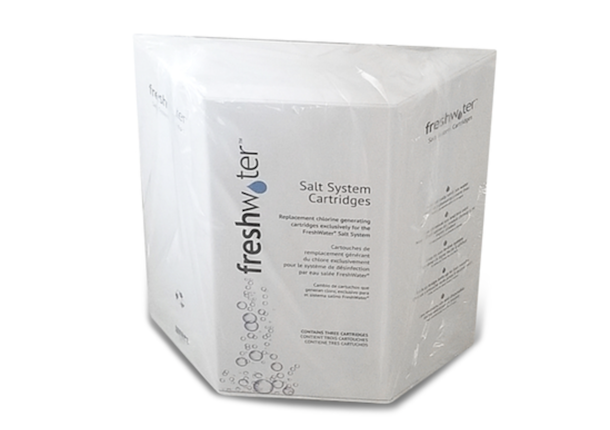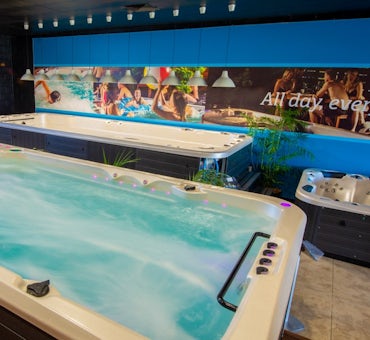At the time time of writing, Spa World does not offer saltwater systems or saltwater spa pools for sale. This article aims to provide helpful guidance for those exploring the option of a saltwater spa. The information, including pros, cons, and costs discussed here, is intended to support your decision-making process when considering a saltwater spa system.
Hotspring® FreshWater™ spa pool salt system review (pros, cons, costs and more)
In this article, we review the Hotspring® FreshWater™ salt system including its features, pros and cons, prices and more.
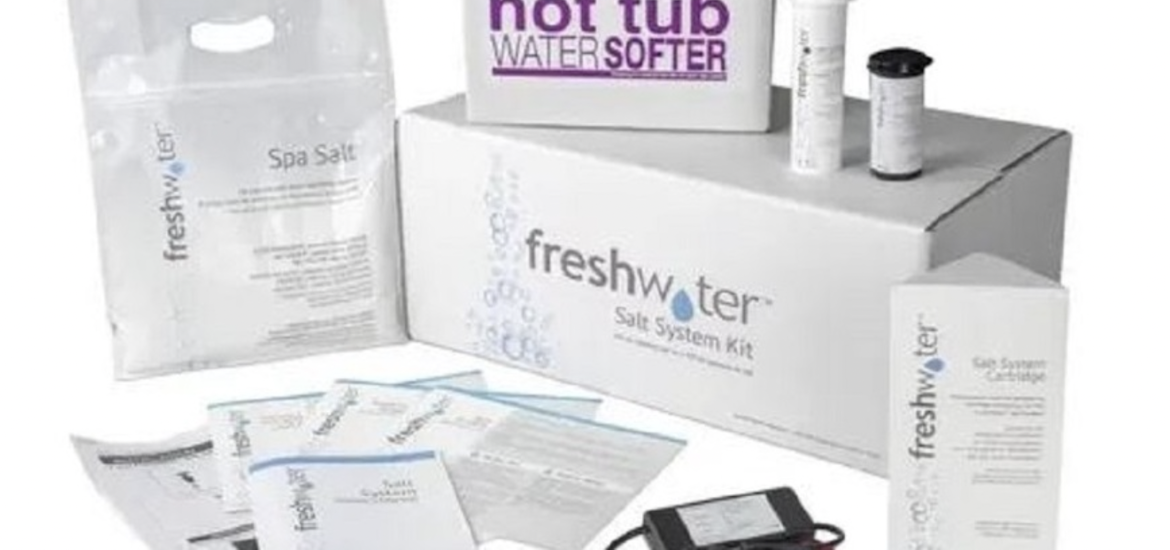
In this article, we answer the questions:
What is the Hotspring® FreshWater™ Salt System?
The Hotspring® FreshWater™ salt system is a unique water maintenance feature that enhances the users’ spa pool experience with no odour and reduced harsh chemicals in the water. The Hotspring® FreshWater™ salt system uses a disposable and maintenance-free titanium cartridge that keeps your spa water cleaner for longer.
Compared with other water sanitising systems, the Hotspring® FreshWater™ Salt System requires minimal water care. Using as little chlorine as you would find in tap water, this saltwater system can naturally maintain hygienic water for up to a full year.
How does the Hotspring® FreshWater™ Salt System work?
The Hotspring® FreshWater™ Salt System works similarly to other saltwater spa pools. Its disposable titanium cartridge automatically releases chlorine from salt to clean the spa water.
Salt cells or salt generators break down or separate salt from water through a process called electrolysis. As a result of electrolysis, sodium hypochlorite and hypochlorous acid are formed as a chemical reaction that naturally produces chlorine and disinfects the water.
The Hotspring® FreshWater™ Salt System uses fewer chemicals, and the chlorine generated from salt doesn't leave behind any residue or odour, unlike chlorine added to water in powdered or bottled form.
The control panel allows the users to set the sanitising cycle depending on spa usage. It also prompts an alert to check the water’s sanitation levels using a test strip every 10 days. The disposable titanium cartridge can last up to four months and requires little or no maintenance.
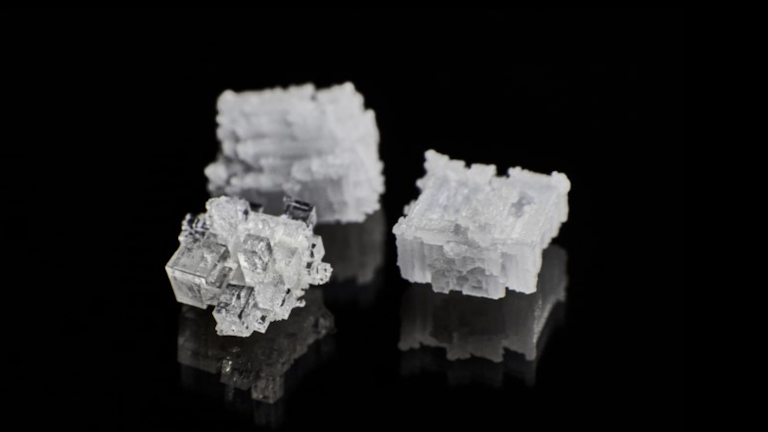
What are the benefits of using the Hotspring® FreshWater™ Salt System?
If you’re wondering if the Hotspring® FreshWater™ Salt System could be the best option for your lifestyle, here are the benefits it offers:
-
Easy to operate. The FreshWater™ Salt System is easy to use and features automated notification reminders within the spa control panel.
-
Uses fewer chemicals. It uses pharmaceutical-grade salt that is free from harmful additives and similar to the level of chemicals in drinking water.
-
Easy to care for. This water sanitation method uses sensors to detect the level of chlorine in the water and only starts a sanitising cycle if there is no chlorine present, unlike chlorine spa pools that require daily sanitising with the addition of chlorine granules.
-
Gentle on skin and eyes. Because the saltwater system uses natural chlorine from salt, the chance of getting skin and eye irritations is lower than in spas using traditional chlorine and bromine.
-
Less chemical smell. The natural process of chlorine production lessens the chlorine odour, allowing the users to enjoy the plunge with the reduced chemical smell in the water.
What are the drawbacks of using Salt Water Systems?
Saltwater systems provide great benefits, before deciding if this might be the best option for you, it is important to also look at possible drawbacks. Let’s look at the disadvantages of this spa water sanitation method.
-
Hight upfront cost. Spas using saltwater systems tend to have a more expensive initial investment.
-
Salt cell chlorinator requires replacing in 2-5 years. Eventually, titanium plates that make-up salt cells may chip off due to low salt levels, wear and tear, or insufficient maintenance. To maintain the water clean, replacing the salt cell chlorinator every 2-5 years is recommended.
-
Potential risk of corrosion. Salt is corrosive on metal. If too much salt is used, the metal components of your spa may get damaged. Keeping the salt level that is lower than 1800ppm can prevent corrosion.
How much salt should I add to my Hotspring® FreshWater™ salt system pool?
Just like any water care system, the Hotspring® FreshWater™ salt system follows a dosing instruction. Let’s go through the step-by-step process of how to add salt to your spa water.
Step 1: Identify the gallon capacity of your hot tub using the owner’s manual.
Step 2: Using the salt bag, determine how much salt you need to add according to your spa’s gallon capacity.
Step 3: To make sure you won’t overdose the water with salt, it is suggested to add half of the salt amount recommended directly into the filter chamber.
Step 4: With the jets running, let the salt dissolve in the water for five minutes.
Step 5: Using the salt water test strips (that came with your saltwater kit) measure the salt level of the water.
Step 6: If the salt level is under 1750ppm (parts per million), add a cup of salt at a time until the desired ppm is reached.
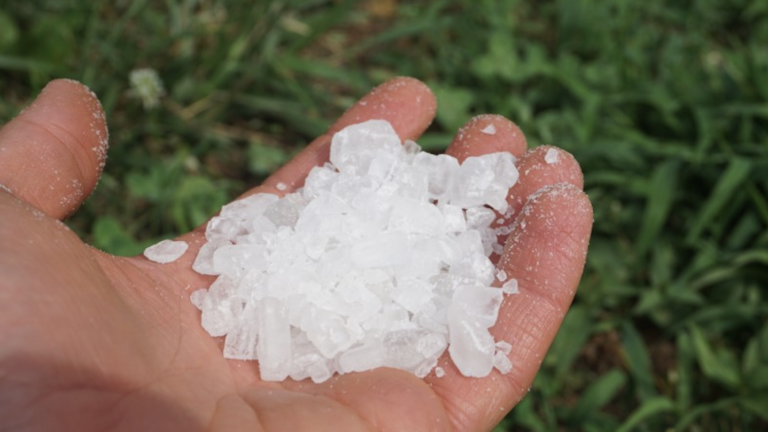
What do I do if I put too much salt in my hot tub?
In the event that you overdose the water with salt, there is an easy and quick solution for you. Here’s how:
-
Step 1: Drain 25% of the spa water and refill with fresh water.
-
Step 2: Allow the jets to run for at least 5 minutes to ensure the water is well circulated.
-
Step 3: Using the test strip that came with your kit, check the water salt in the water.
-
Step 4: If the test reading still shows higher than the recommended salt level, repeat steps one to three.
-
Step 5: In case the salt content is still high, you might need to drain and refill the spa completely.
Tip: To avoid overdosing the water with salt, add half the recommended salt amount then add salt accordingly until the desired ppm is reached.
Can I still use chlorine in my Hotspring® FreshWater™ salt system pool if I want to?
The main function of the saltwater system is to produce chlorine from salt and keep the chlorine content at a certain level. There is no need to manually add chlorine sanitiser.
Will adding salt make my water cloudy or dirty?
There are several reasons why the spa water gets cloudy. Let’s take a look at some of the main reasons for cloudy saltwater spa pools.
-
Unbalanced pH levels. Your spa water pH should be within the range of 7.2 to 7.8. If the spa water contains too much or insufficient salt, the pH level will eventually rise or drop. This causes the spa water to get cloudy. You can use a test strip to check the water’s pH level and add chemicals accordingly. Make sure to follow the manufacturer’s instructions on the label.
-
Too much calcium in the water. Your pool water can also become cloudy if it contains too much calcium. Using a calcium reducer or draining and refilling your pool will remove excess calcium.
-
Clogged filters. If the filters are dirty or clogged, they are unable to filter the debris and other elements in the spa water. This may cause the water to get cloudy or foamy. You can clean the filters using a filter cartridge cleaner solution. You may also use a filter wand to hose them out thoroughly before fitting them back into the spa.
-
Calcium deposits on the chlorinator cell. Calcium deposits can build up on the chlorinator cell over time. The chlorinator cell will produce less chlorine if calcium builds up in the cell, causing contaminants to accumulate and the spa pool to become cloudy. You may clean the chlorinator cell using a cleaning product or a vinegar solution.

Is a saltwater system better than chlorine for a spa pool?
The saltwater and chlorine spas both use chlorine to sanitise the water. Saltwater spa pools generate chlorine from salt dissolved in the water, while chlorine spas use a chemical form of chlorine. So which is better, the salt water and chlorine spa pools? The answer varies depending on the user's personal preferences.
If you’re you are willing to pay a higher upfront cost and want to enjoy your spa with less regular maintenance, the salt water system might be the right choice for you.
Chlorine spas on the other hand are a more cost-effective option. Although you are required to manually add chlorine granules to keep the water safe, this task may not be as daunting as you think it is once you create a routine.
Another consideration to make is that saltwater spas have less chlorine smell and tend to have better water buoyancy than chlorine spas. They may also be the best option for people who have a higher risk of getting skin and eye irritation due to byproducts in granular chlorine sanitisers.
You can read more about our in-depth comparison article between traditional chlorine and saltwater sanitising systems to help you understand which one suits you best.
Summary:
In this article, we explained the advantages and disadvantages of the Hotspring® FreshWater™ salt system, including the possible troubleshooting steps for common issues you may encounter.
We also talked about the differences between saltwater systems and chlorine spas, and the important considerations when choosing what water care method best fits your budget and lifestyle.
